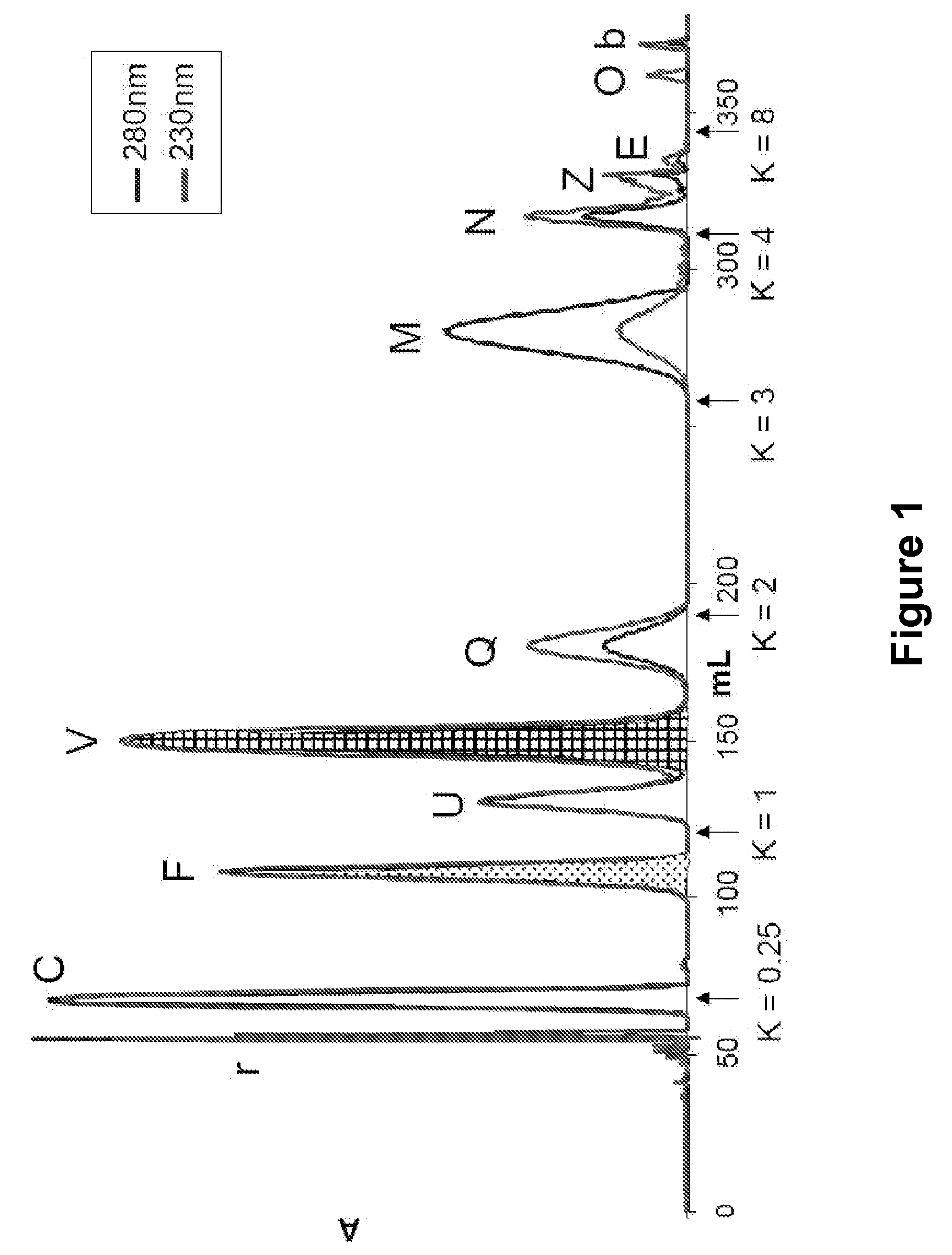Reciprocal Symmetry Plots as a New Representation of Countercurrent Chromatograms
a countercurrent chromatogram and symmetry plot technology, applied in chemical methods analysis, instruments, material analysis, etc., can solve the problems of affecting the ability of users to make meaningful, hindering the ability to visualize all possible analytes in a single chromatogram, and inability to meaningfully compare outputs between different instruments, so as to improve the ability to assess the result, improve the accuracy of measurement, and improve the effect of measuremen
- Summary
- Abstract
- Description
- Claims
- Application Information
AI Technical Summary
Benefits of technology
Problems solved by technology
Method used
Image
Examples
example 1
Reciprocal Symmetry Plots
[0055]Traditionally, chromatograms in countercurrent chromatography (CCC) have been plotted with retention volume or time on the x-axis. However, the distribution constant (K) is a more appropriate, reproducible value for the x-axis, because it is a physicochemical property of a particular analyte in a particular solvent system. Therefore, K is independent of both the total column volume and the stationary phase volume ratio (SF) of the column. Going one step beyond simple K plots, the Reciprocal Symmetry (ReS) plot, with K and 1 / K positioned on either side of a line of symmetry on the x-axis, represents all K-values, zero to infinity. Based on experimental evidence, using a mixture of CCC reference standards, the ReS plot demonstrates both the invertible and “symmetric” nature of CCC, a consequence of the exchange of the mobile and stationary phases by reversing the direction of the flow and the symmetry of the liquid-liquid partitioning process between two...
example 2
Performance Characteristics of Countercurrent Separation in Analysis of Natural Products of Agricultural Significance
[0087]A standard test mix consisting of 21 commercially available natural products of agricultural significance, termed the GUESSmix, was employed to measure the countercurrent chromatography performance characteristics of a very popular quaternary solvent system family made up of hexane-ethylacetate-methanol-water (HEMWat). The polarity range of the GUESSmix combined with the elution-extrusion countercurrent chromatography (EECCC) technique and the reciprocal symmetry (ReS) and reciprocal shifted symmetry (ReSS) plots (outlined in Example 1) allow liquid-liquid distribution ratios (KD) to be plotted for every compound eluted on a scale of zero to infinity. It was demonstrated that 16 of the 21 GUESSmix compounds are found in the optimal range of resolution (0.25DD=1. This study lays the groundwork for evaluation and comparison of solvent system families proposed in t...
PUM
| Property | Measurement | Unit |
|---|---|---|
| liquid- | aaaaa | aaaaa |
| partition chromatography | aaaaa | aaaaa |
| reciprocal symmetry plot | aaaaa | aaaaa |
Abstract
Description
Claims
Application Information
 Login to View More
Login to View More - R&D
- Intellectual Property
- Life Sciences
- Materials
- Tech Scout
- Unparalleled Data Quality
- Higher Quality Content
- 60% Fewer Hallucinations
Browse by: Latest US Patents, China's latest patents, Technical Efficacy Thesaurus, Application Domain, Technology Topic, Popular Technical Reports.
© 2025 PatSnap. All rights reserved.Legal|Privacy policy|Modern Slavery Act Transparency Statement|Sitemap|About US| Contact US: help@patsnap.com



